Below are breathtaking and unique images of celestial objects and phenomena captured by the James Webb Space Telescope.
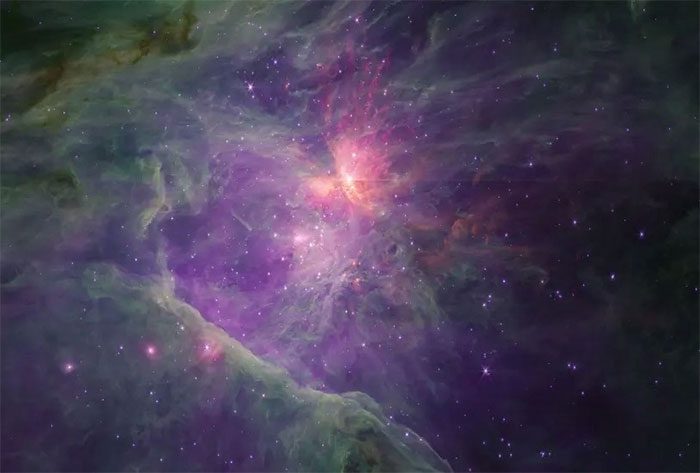
A pair of stellar nurseries located 1,600 light-years away, the Orion Nebula and the Trapezium Cluster serve as a “home” to very young and bright stars. Four of these stars can be observed with a regular telescope. Notably, one of these four stars is visible to the naked eye, shining 20,000 times brighter than the Sun. In addition to these four prominent stars, the Orion Nebula and Trapezium Cluster also contain approximately 700 young stars in various stages of formation.
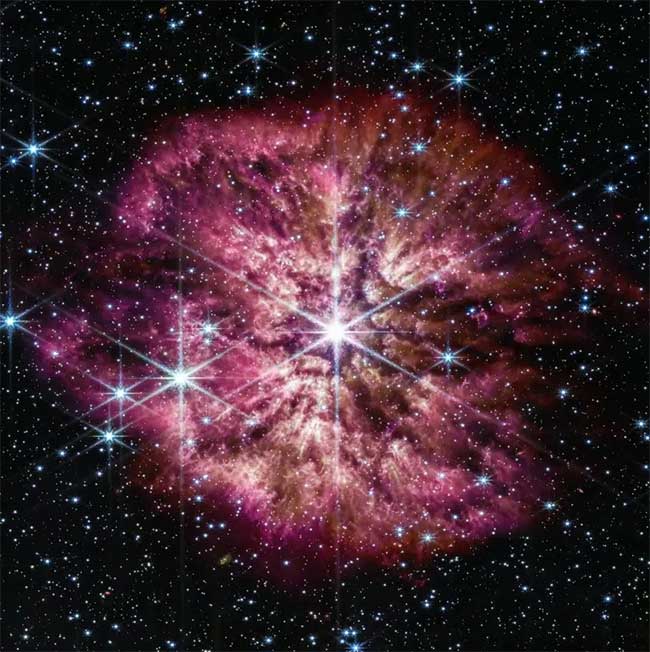
The image of a Wolf-Rayet star captured by the James Webb Space Telescope is located 15,000 light-years away. This rare giant star type is estimated by NASA to have only about 220 representatives within the Milky Way, which contains at least 100 billion stars. Wolf-Rayet stars burn energy rapidly and intensely, with temperatures 20 to 40 times that of the Sun’s surface, leading to their swift and violent demise. A star like the Sun burns for approximately 10 billion years, while a Wolf-Rayet star lasts only a few hundred thousand years.
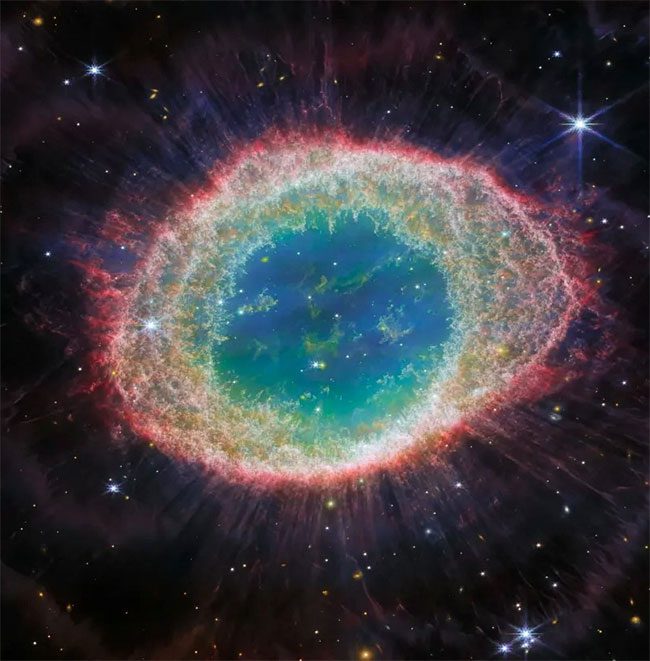 The Southern Ring Nebula, located 2,000 light-years from Earth, is captured in stunning beauty by the James Webb Space Telescope. This nebula was discovered by the French astronomer Antoine Darquier de Pellepoix in 1779.
The Southern Ring Nebula, located 2,000 light-years from Earth, is captured in stunning beauty by the James Webb Space Telescope. This nebula was discovered by the French astronomer Antoine Darquier de Pellepoix in 1779.
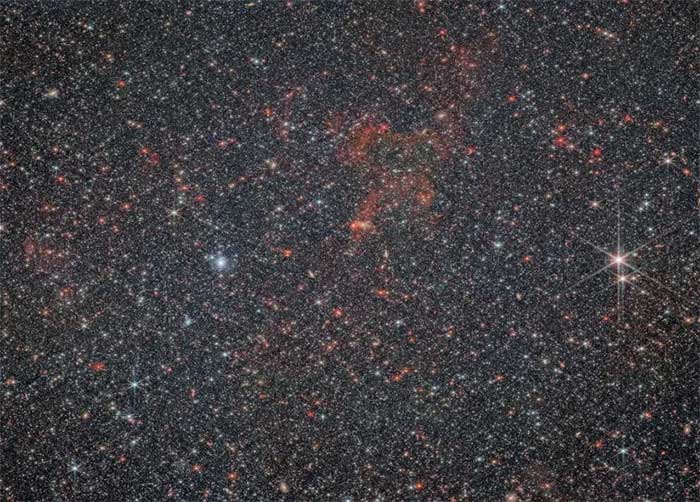
Dwarf Galaxy NGC 6822 contains about 10 million stars compared to at least 100 billion stars in the Milky Way. However, the number of stars in this galaxy is still remarkable in the image captured by James Webb. Discovered in 1884 by American astronomer E.E. Barnard, NGC 6822 is known for its 200-light-year-long dust tail. It is also home to stars that shine 100,000 times brighter than our Sun.
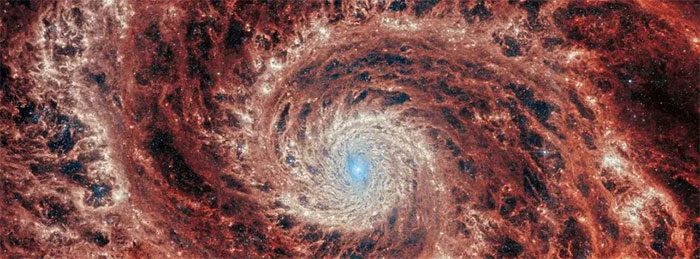
Spiral galaxies are typically identified by their uneven “arms.” However, this is not the case for Galaxy M51, located 27 million light-years from Earth, which is distinguished by the tension of its “arms” and the density of its structure. M51 is not alone in the universe; nearby is Galaxy NGC 5195. These two galaxies are colliding, and it appears NGC 5195 has the upper hand.
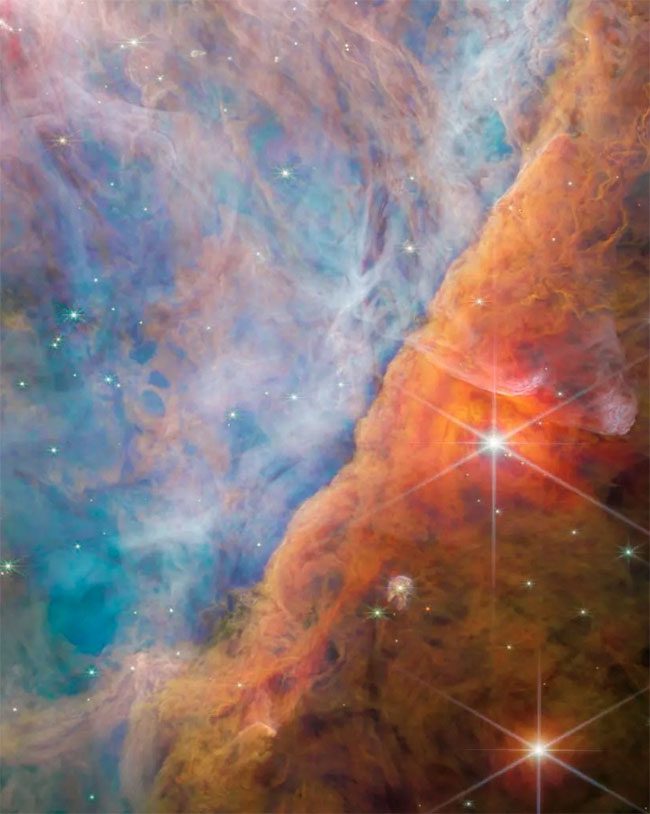
Located under the belt of Orion is one of the most famous celestial objects in the night sky: the Orion Nebula – a stellar nursery that is “home” to 700 young stars. This image from the James Webb Space Telescope does not focus on the entire nebula but rather highlights a section of its structure.

Cluster IC 348 is only 5 million years old and 1,000 light-years away. Comprising about 700 stars, IC 348 resembles thin curtains formed by dust reflecting the light of the stars.

Pandora Cluster, also known as Abell 2744, is not just a galaxy or a cluster of galaxies but rather a cluster consisting of four galaxy clusters. Located 3.5 billion light-years from Earth, the Pandora Cluster spans 350 million light-years. Its massive gravitational pull has allowed astronomers to utilize it as a gravitational lens, bending and magnifying the light from objects behind it, making observation easier.

The James Webb Space Telescope was designed to observe the oldest and most distant objects in the universe, some of which are located 13.4 billion light-years away. In the image is Saturn and some of its 146 moons.
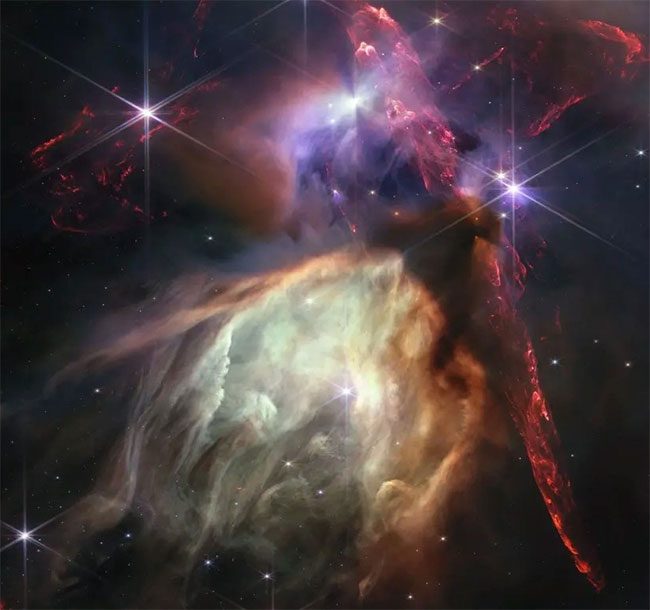
The Rho Ophiuchi cloud complex is a colorful dust cloud region. This is the nearest star formation region to our Solar System. The Rho Ophiuchi molecular cloud is dubbed the summer masterpiece and is located about 460 light-years away in the constellation Ophiuchus (also known as the Serpent Bearer).


















































